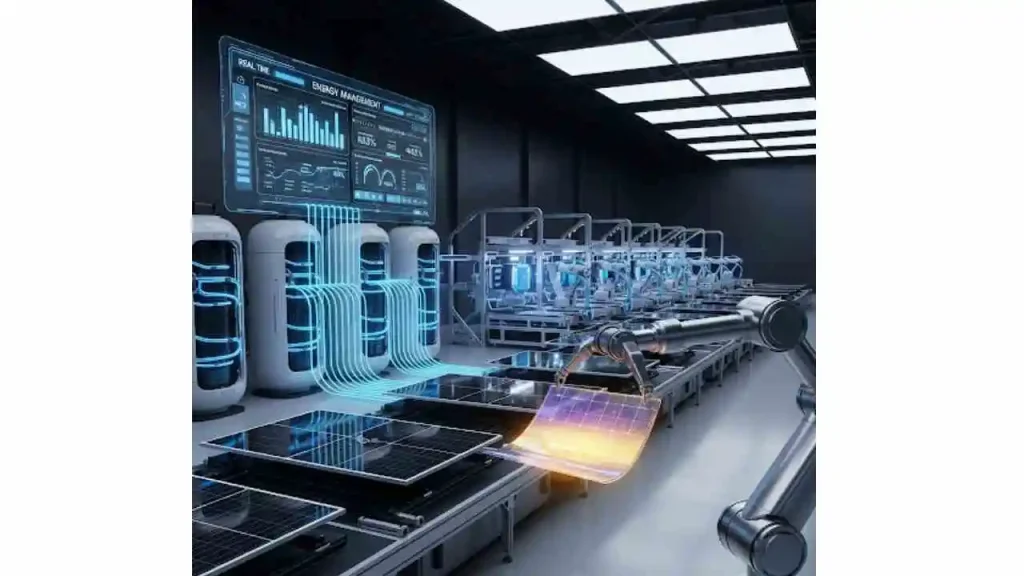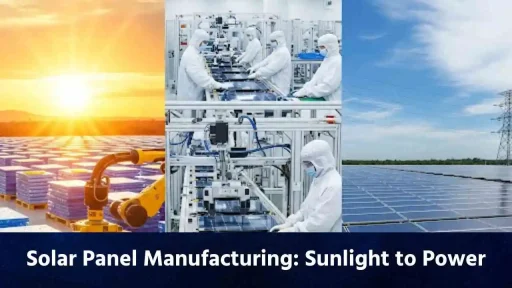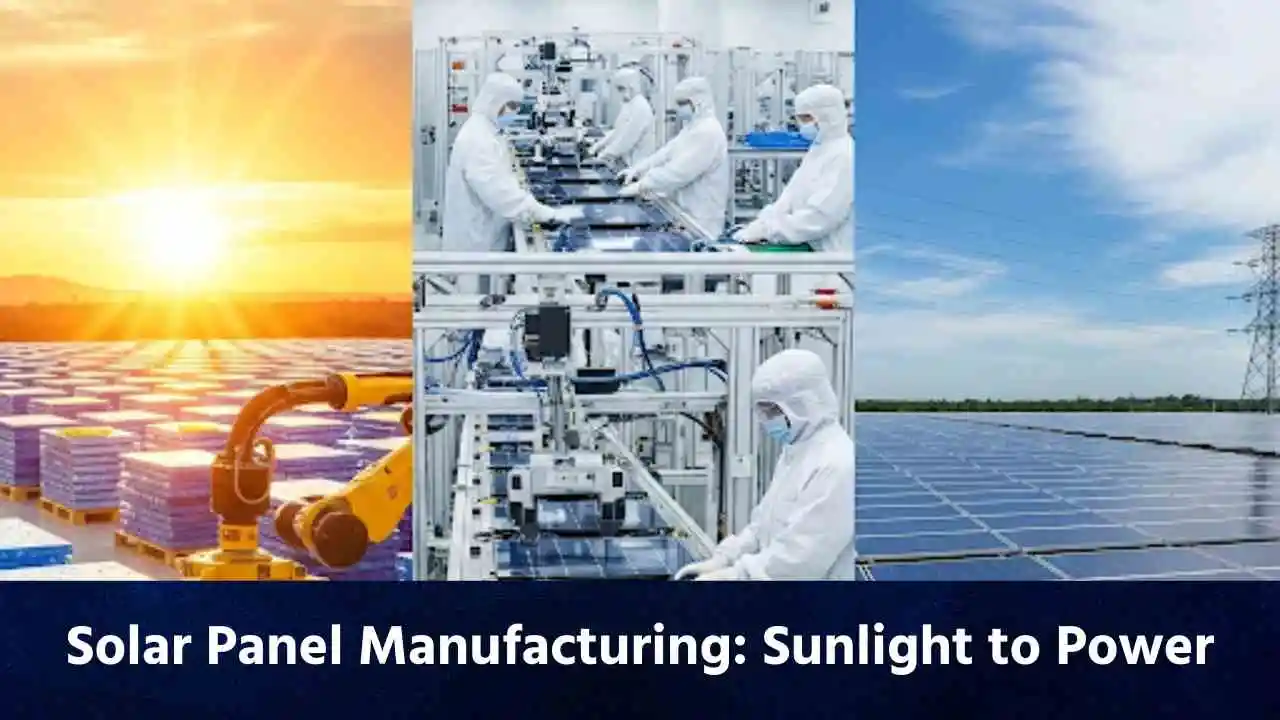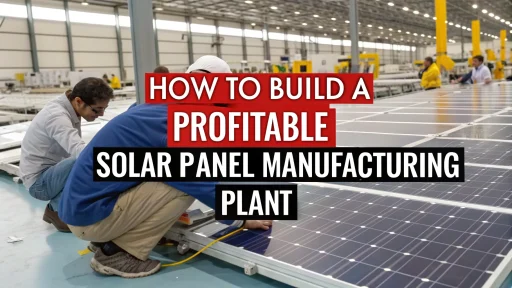Solar energy is one of the most renewable and cleanest sources of power. It converts the sunlight into electricity. As the world moves towards cleaner energy, solar panels are in demand. let’s know about how can you make solar panels?
This article will guide you through the production of solar panels. Solar panels are important for the future. Learn more about their manufacturing process.
What is a Solar Panel?
You may have seen solar panels on roofs. The panels convert sunlight into electricity. Each panel contains many tiny cells made mostly of silicon. These cells combine to produce the power needed for your home. The cells are good for the environment because they do not emit any harmful gases or smoke, moreover they can last up to 25 years!
Solar Panel Manufacturing: Why is it Important?
Solar panels can be a great source of clean energy. People might want to use them, if its price goes down further more. Solar panels also help people find jobs, create cool new technology, and reduce pollution. Additionally let me tell you that solar panels also help people find jobs, create cool new technology, and reduce pollution.
Solar Panel Manufacturing: A Step-by-Step Process

Now let’s look at how people make solar panels.
Raw Material: Silicon
Solar cells are primarily made of silicon, and you can find silicon in rocks and sand. Solar cells require silicon that is extremely pure. Steps are here:
- Purification: To remove impurities from silicon, manufacturers heat it to very high temperatures (over 2000 °C).
- Crystal Formation: They convert pure silicon into one or several crystals, depending on the size and type of panel needed.
- Quartz or Sand: Miners extract silicon from rocks and sand.
There are two main types of silicon-based solar panels:
- Monocrystalline (single crystal) – more effective, but more costly
- Polycrystalline (multiple Crystals) – less effective, but cheaper
Solar Panel: A Project Blueprint for Startups in the Green Hydrogen and Energy Storage Ecosystem
Making Silicon Wafers
Wafers, thin sheets of silicon which can be cut to pure crystals. Check steps below:
- Ingot cutting: Silicon crystals are cut into large cylinder shapes known as ingots
- Slices: Ingots are cut into thin pieces using a wiresaw. Each slice is about the thickness of a piece of paper
- Cleaning: Wafers cleaned of dust particles and other contaminants
Creating Solar Cells
Manufacturers use thin silicon wafers to create solar cells. Solar cells can generate electricity by using sunlight. Check the steps below:
- Doping: They add a small amount of phosphorus (or chromium, for example) to silicon to improve its conductivity, a process known as doping.
- Texturing: Producers roughen the wafers to capture more sunlight.
- Coating: A coating that is anti-reflective absorbs more light than it reflects
- Metal contacts: They are small lines of metal that are printed both on the front and back of the wafer. They carry the current created when sunlight strikes the cells
Know about our popular ‘Power Project‘ report
Solar Panel Assembly
After creating solar cells, the next step is to combine these to create a complete array. Check the steps below:
- Metal strips: They are used for connecting the cells. The typical panel has up to 60 cells
- Encapsulation: Cells enclosed in layers of plastic or tempered glass to protect against dust, water and weather
- Glass layer: To protect the cells, a strong and durable glass layer is placed on top of them. This layer allows light to pass through while protecting them
- Back sheet: A protective backing sheet is used to protect the panel
- A metal frame (usually made of aluminum): It is used to hold the panel together and facilitate installation
- Junction box: Add it to the panel’s back panel. This box is for electrical connections
Once assembled, the panel is ready for use.
Solar Panel Testing
Before selling or shipping, one must test it to ensure they work. Testing includes:
- Test for Power Output: Test to determine the amount of electricity that a panel can produce
- Weather Resistance Test: This test is must for better. This ensures that it can withstand wind, rain and snow
- Durability test: To see if the product can last for 25 years or more
You can sell only those panels that pass all tests.
Want to choose best business Idea for your budget?
You can use our Startup Selector Tool to find best business project for yourself
Packaging and Shipping
People use wide range of applications for packaging and shipping:
- Home
- Offices
- Factories
- Solar farms
- Even space satellites!
Solar Panel Manufacturing: Sustainability
Solar panels reduce pollution, but the manufacturing process consumes energy and resources. Many companies are working toward:
- Purify silicon using cleaner methods
- Recycle old materials, panels and other items
- Reduce your use of chemicals and water
- After 25 years, use panels that are easier to recycle
- Solar energy is a more eco-friendly system
Solar Panel Manufacturing: Key Challenges
Solar panels! They are still not that perfect.
- High Cost: You must be aware of the fact that prices are falling, but, the initial cost of panels is still high.
- Energy consumption: The manufacturing industry consumes large amounts of electricity
- Material waste: Some silicon is lost when cutting
- limited Recycling: Not all solar panels can be recycled
Future of Solar Panel Manufacturing

The future of solar panel manufacturing is bright. Researchers are testing new materials like perovskite for production of more affordable and efficient solar panels. Automated production allows factories to produce solar panels faster and more efficiently.
Smarter technology can now better store and manage solar energy. Solar panels are evolving as more people and countries use them.
Read our Solar PV Power And Solar Products Handbook to know more
Conclusion
Solar panels are a powerful tool in the battle against global warming. It may seem complicated. The process is simple. As technology improves, solar panels will become more efficient.
Solar Panel Manufacturing: Frequently Asked Questions (FAQ)
Q: What materials go into a solar panel?
A: Silicon acts as a semiconductor. In the EU, you will find glass, an aluminum frame, plastic film, and silver or copper wire.
Q: How long does it take to manufacture a solar panel?
A: It varies based on factory automation and production scale. The silicon processing is typically the most time-consuming phase.
Q: Is it possible to build a solar panel at home?
A: Technically, yes—you can construct a basic solar panel for educational or experimental purposes. However, home-built panels lack the efficiency, safety, and longevity of factory-certified models.
Q: What is the typical lifespan of a solar panel?
A: It might be 25 to 30 years of service.
Q: Does manufacturing solar panels harm the environment?
A: This process is energy-intensive and uses chemicals, particularly in the purification of silicon. However, the environmental impact is significantly lower than that of fossil fuel-based electricity generation.
Q: Which countries mostly manufacture solar panels?
A: The leading producers are China, India, and the United States.







